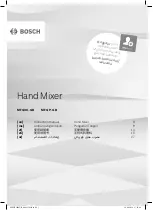
4.3: INPUT CHANNEL > DYNAMICS
Vi3000 USER MANUAL
®
4.3
INPUT CHANNEL > De Esser
Vi3000 USER MANUAL
®
11.3 - 11.3
11.3: SOLO > AUTO CANCEL BEHAVIOUR
11.0: SOLO System
Solo Operation Logic
Activating Solos
A Solo is activated when any Solo/Sel switch on the console is pressed, as long as the following is true:
• Gang Mode is not active
• VCA or Mute Group Setup page is not open
• Input or Output Fader Page Setup page is not open
Clearing Solos
• All active Solos can be cleared by pressing the momentary Solo Clear switch in the Master Section of the console.
This switch illuminates when any Solos are active.
• Solos can be switched off manually.
• Solos can be cleared by pressing other Solos, if AUTO CANCEL mode is enabled (see later in this chapter).
Input Priority Mode
When Input Priority is enabled, via the I/P PRI button in the master bay, it allows an Output Solo to remain active,
whilst an Input Solo is temporarily activated ‘over the top’ of it. When the Input Solo is activated, its audio replaces the
Output Solo audio on the Solo Bus, although the Output’s Solo/Sel switch remains illuminated. When the Input Solo is
deactivated, the Output Solo’s audio will return to the Solo Bus.
HINT: Input Priority mode is normally used by Monitor engineers, who tend to work with an Output Solo always active,
but occasionally need to solo an input to troubleshoot a problem. The Input Priority mode ensures that they automati-
cally return to the Output Solo they were listening to, after the Input Solo is deactivated.
Autocancel Mode
In the majority of cases in live sound mixing, only one channel is soloed at any time, so it has become common prac-
tice for solos to ‘autocancel’ so that pressing any solo cancels the previous one, and only one solo can be ON at any
time. This speeds up operation by eliminating the need to switch solos off before soloing the next channel. In some ap-
plications however, such as line checking, it is necessary to keep one channel soloed as a shout talkback feed whilst
soloing others, so additive solo is required in these cases. The {Autocancel} On/off switch in the Monitor Setup page
allows the behaviour to be set according to requirements. It is also possible to solo more than one channel or bus at a
time even if {Autocancel} mode is ON, this is achieved by holding down the first solo whilst pressing the next. This kind
of additive solo is temporary however, and the next solo to be pressed will cancel all of the active solos.
Input priority and Autocancel mode work together if both enabled so that Output Solos cancel among themselves and
input solos cancel among themselves, but Input Solos do not cancel Output solos or vice versa.
Follow Output Solo Mode
A key feature of modern digital consoles is a method of assigning the channel faders to control Aux send levels for
monitor mixing. On the Vi3000, this mode is called ‘Follow’ mode, meaning that the Input faders will Follow the selec-
tion of the Output bus solo, which doubles as a bus select switch.
Follow mode is engaged using the distinctive, triangular Follow Output Solo [FLW] keys. There are three [FLW] keys:
one fader key and two Vistonics area keys. Only one key can be active at any one time (or none can be selected).
Selecting Follow mode for the Vistonics area means that a horizontal row of Vistonics encoders will be assigned
across the whole console to the contribution levels of the currently soloed bus. There is one [FLW] key for the upper
Vistonics row and one for the lower row. To use Follow mode on Vistonics area, the Vistonics screens must have all
processing views deselected.
• If Follow Solo is NOT active for faders or Vistonics encoders, pressing a Group or Aux Output Solo will activate an
Summary of Contents for SoundCraft Vi3000
Page 1: ...User Guide v1 4...
Page 14: ...Vi3000 USER MANUAL 3 0 3 3 0 QUICK START 3 0 QUICK START Inputs Controls Input Channel Access...
Page 16: ...Vi3000 USER MANUAL 3 0 5 3 0 QUICK START 3 0 QUICK START Outputs Control...
Page 18: ...Vi3000 USER MANUAL 3 0 7 3 0 QUICK START 3 0 QUICK START Copy Paste Move LIbrary...
Page 20: ...Vi3000 USER MANUAL 3 0 9 3 0 QUICK START 3 0 QUICK START Main Menu System Lexicon FX...
Page 26: ...5 0 5 0 Operations Overview Vi3000 USER MANUAL 5 0 Operations Overview 5 0 Operations Overview...
Page 68: ...Vi3000 USER MANUAL 7 0 7 0 OUTPUTS 7 0 OUTPUTS Outputs Auxilliaries Groups and LCR Mix busses...
















































